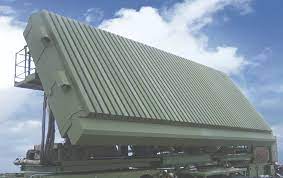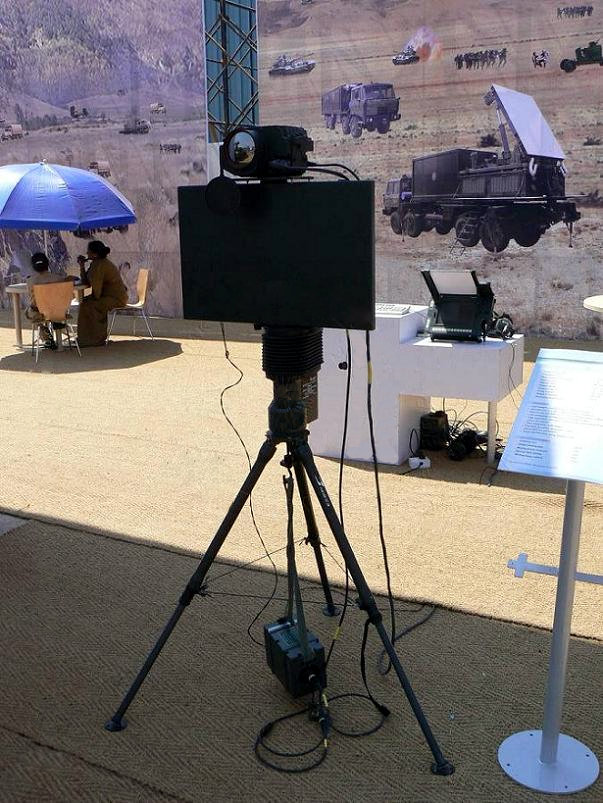Radar Systems
A detection system that uses radio waves to determine the range, angle, or velocity of objects is known as RADAR. Armed forces use it to detect aircraft, ships, spacecraft, guided missiles, motor vehicles, weather formations, and terrain. One of its components includes a transmitter through which electromagnetic signals are produced which are then radiated into space with the help of an antenna, when this signal strikes any object, it gets reflected or reradiated in various different directions and that reflected signal is received by the radar antenna which is then further delivered to the receiver. The reflected signal is then processed to determine the geographical statistics of the object. Radar is considered to be the most valuable component of military technology.
Electronics and Radar Development Establishment (LRDE) is a laboratory in India that comes under the Defence Research & Development Organisation ( DRDO ) which has the responsibility of manufacturing radars which are used for various purposes. Some of which are also successfully used by the Indian Army.
List Of The Radar Systems Used By Indian Armed Forces
1. Indra I Radar
- INDRA stands for Indian Doppler Radar.
- designed by DRDO and manufactured by Bharat Electronics Limited.
- It is a series of 2D radars used by the Indian Army and Indian Air Force.
- The INDRA-I mobile surveillance radar is used to detect low-level targets
- INDRA-II is used to intercept targets under ground control.
- Its features include Automated Track While Scan (TWS), integrated IFF, and a fast scan rate for high-speed target detection.
- first significant radar system manufactured in India.

2. Indra MK2 Radar (Indian Doppler Radar)
- A modified version of Indra is used for ground-based target interception.
- Its feature includes High range resolution, pulse compression and ECCM capabilities.
- Detect low-flying aircraft in areas with dense ground clutter.
- Used by the Indian Army and Air Force
- Manufactured by Bharat Electronics Limited.
- The Indian Air Force has ordered seven INDRA-II aircraft.
3. Rajendra Radar (TLR)
- Developed by DRDO and used by Aakash Air Defense System.
- Works as a main fire control sensor for an Akash battery and helps in directing Akash surface-to-air missile system.
- It is a multifunction electronically scanned phased array radar.
- It is a passive electronically scanned array (PESA) radar that directs Aakash missiles to their intended targets.
- Used for surveillance, tracking, and guidance.
- It is mounted on a two-wheeled vehicle.

4. Swathi Weapon Locating Radar (WLR)
- It is a mobile-phased array radar for locating artillery.
- It detects the site of origin of counter-battery fire by tracking incoming artillery and rocket fire.
- manufactured by combined efforts of various industries like Bharat Electronics Limited, LRDE, and the DRDO’s Bangalore base laboratory (BEL).
- It helps the Indian Army find Pakistani artillery locations along the LOC
- It has the capability of tracking seven targets at once.

5. Central Acquisition Radar (3D-CAR)
- The DRDO created a 3D S-Band Radar for the Indian Army and Indian Air Force.
- It had two variants – Revathi and Rohini.
- Air Force uses the Revathi variant, whereas the Rohini variant is used by the Indian Army.
- Identify low-altitude objects, as well as supersonic aircraft travelling at above Mach 3 speed, and track targets out to a range of more than 180 km.
- Its components are the digital receiver and programmable signal processor.
- Provides High resolution, precision, responsiveness, and information availability.
- Mounted on two high-mobility TATRA vehicles to fulfil operational and tactical mobility requirements.
6. Ashwini Radar
- Works on 4D Low-Level Transportable Radar technology
- It measures distance, azimuth, height, and velocity vector which is helpful in tracking hostile targets with absolute precision.
- It has a detection range of up to 200 kilometres and can detect fast-moving targets.
- Being conveniently transportable, it is an active phased array.
- It is designed to be quickly deployable and serves as an alternate for the tested Rohini system.
7. Tethered Aerostat Radar
- It is an American low-level airborne ground surveillance system.
- The aerostats are basically moored balloons filled with helium.
- It can soar up to a height of 15,000 feet (4,600 metres) while tethered by a single cable.
- The largest can hoist a cargo of 1,000 kg to a working altitude that offers radar coverage at ground level and to the downward side.
8. Swordfish Radar (LRTR)
- An official descendant of the original Green Pine is the Swordfish Long Range Tracking Radar produced by the Indian Defence Research and Development Organization.
- An Indian long-range tracking radar called Swordfish was created mainly to detect ballistic missiles.
- So it comes under the ballistic missile programme of India.
- its testing was started in March 2009 in which the performance of the indigenously developed Swordfish Long Range Tracking Radar (LRTR) was verified.
- Swordfish is a recognised descendant of the crucial element of Israel’s Arrow missile defence system, the long-range Green Pine radar.
- It uses Indian Transmit Receive modules, signal processing, computers, and power sources, it is different from the Israeli system in this regard.
- It was designed to meet India’s unique BMD requirements and is better than the original Green Pine system which was already in use.

9. PJT-531 Battle Field Surveillance Radar
- It is a man-portable 2D short-range battlefield and perimeter surveillance radar.
- This radar has been a boon to Indian forces at LOC.
- It is used by the Indian Army and BSF along with foreign customers like Indonesia and Sudan.
- It operates in J Band in 21 frequencies and can detect crawling men, groups of men, Armored Vehicles and Heavy Vehicles at varying distances.









 AFCAT Eligibility Criteria and Age Limit...
AFCAT Eligibility Criteria and Age Limit...
 AFCAT Previous Year Papers, Download PDF
AFCAT Previous Year Papers, Download PDF
 CDS Previous Year Question Papers, Downl...
CDS Previous Year Question Papers, Downl...





